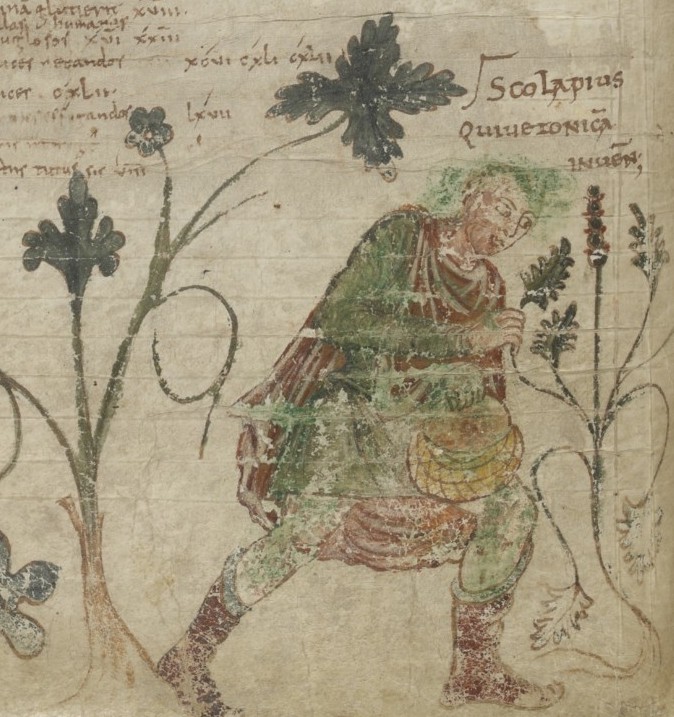Healing in the Dark Ages: New book explores early Medieval medicine

First, to effect the cure, you need a dead vulture.
But it can’t just be any dead vulture. You have to somehow kill it with a reed, while reciting specific prayers at a specific time. Then you have to preserve its various parts, presumably for use by the Dark Age equivalent of an apothecary.
Medical treatment in the ninth-century Carolingian Empire didn’t much resemble the care you receive today in a modern doctor’s office. Considered a sacred art, early Medieval medicine is the topic of Binghamton University Associate Professor of History Meg Leja’s first book, Embodying the Soul: Medicine and Religion in Carolingian Europe, published this year with the University of Pennsylvania Press. The empire included areas that now comprise modern-day France, Germany, Switzerland, the Netherlands and northern Italy.
If you look at most universities’ course offerings in the history of medicine, they usually begin in the 16th or 17th centuries, and few books explore the medical practices of earlier periods, Leja said. Early medieval medicine has been traditionally regarded as superstitious, a degraded remnant of the Greco-Roman tradition of medicine.
“In the early Middle Ages, everything is suffused with religion, which puts medicine within a different context. Yet, it can still be recognized as a rational form of healing within that environment,” Leja said. “It was their understanding of the way the world works.”
Remedies addressed a wide array of familiar complaints: headaches, baldness, eradicating unwanted hair and dry eyes, to name a few. Carolingian healers drew on theories from the Greco-Roman world concerning the four bodily humors, different types of fevers and the differences between male and female bodies. Practices, however, weren’t identical with those of the ancient times and much textual knowledge was lost.
“Because this is after the end of the Roman world and so much of it was written in Greek, that whole system of knowledge has become quite fragmented,” Leja explained. “They have excerpts of Greek knowledge they tried to put together, reconfigure and expand. So Dark Age medicine does look a bit classical, but it doesn’t look the same as it would in a treatise from Hippocrates or Galen.”
Overall, medical practices remained relatively consistent from antiquity until the 1800s; bloodletting was common, along with herbal remedies, plasters for skin and regimens that included fasting, rest and dietary changes to both prevent and treat diseases.
“Sometimes, these recipes can have lots of steps and involve exotic ingredients that may have been hard to get your hands on,” she said.
While ninth-century medical practices may seem alien to us today, they are undergirded with a form of logic. Words, especially those connected with faith, had a particular potency, as did different times of day or moon phases, which were believed to affect bodily fluids much in the same way that the moon affects the tides.
Oftentimes, people dismiss these practices as magic and superstition. But they were important in their day; significant resources were put into copying these medical texts onto parchment during a time when books were inordinately expensive. To ninth-century practitioners, these techniques were the height of medical science.
Who those practitioners were largely remains a mystery; history records the names of only a handful of the period’s doctors, such as those attached to kingly courts. Some monasteries also devoted resources to healing; the building plans for one such facility included designated rooms for bloodletting, giving purgatives and storing the period’s equivalent of pharmaceuticals.
Because of this, it seems likely that some monks received medical training, as well as priests. Some books, for example, include both instructions on how to conduct a Christian baptism alongside healing techniques for ulcers. The medicus, or doctor, emerges as a spiritual figure who can see into the divine realm, predict the future and heal soul as well as body.
We shouldn’t automatically dismiss the efficacy of these treatments, either. While it’s outside the scope of Leja’s book, a University of Nottingham researcher found a thousand-year-old recipe for eye infections written in Old English. When a team of microbiologists followed the recipe to the letter — including instructions that might seem odd to modern eyes — they produced a salve that proved effective against antibiotic-resistant bacteria.
“It hints at the idea that some of this stuff really had efficacy, and that we should be more humble,” Leja said. “If we dismiss these recipes as ignorant superstition, we could be, in fact, missing something important.”
Currently, Leja is working with an international group of researchers to catalog Latin manuscripts containing medical content from before the year 1100. In addition to medical treatises, cures and treatments can appear in unusual places, such as religious texts.
“What we see when we take a wider scope is that people probably had access to some literate medicine here and there across a wider swath of society. Medical knowledge was probably common in different parts of the empire, among people with very different backgrounds,” she said. “They were preserving a recipe or a bit of information about a plant wherever they could.”
